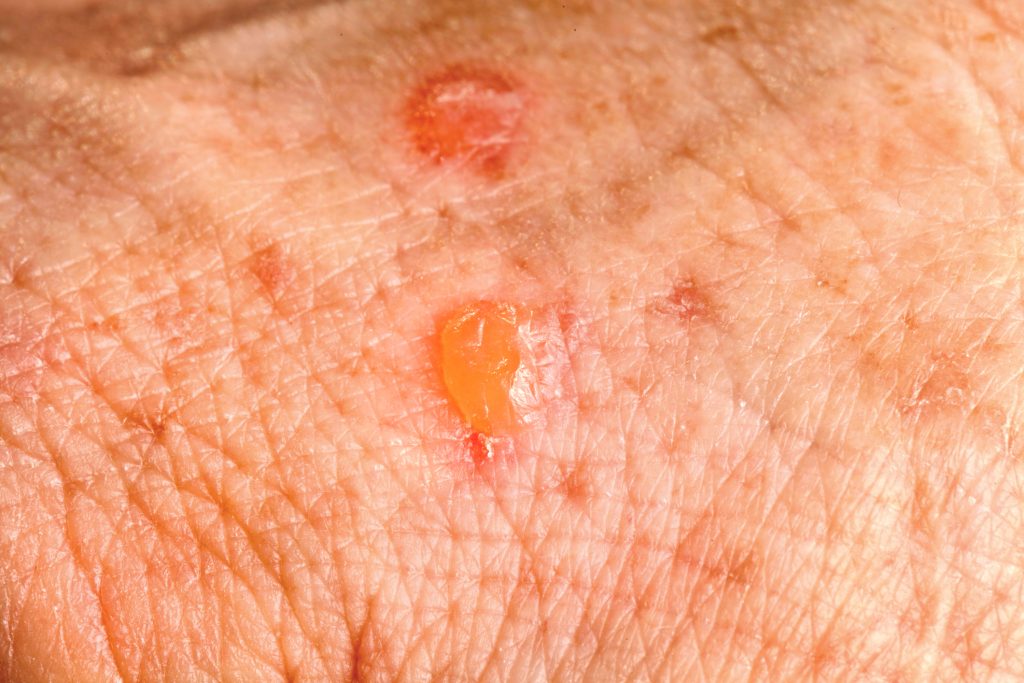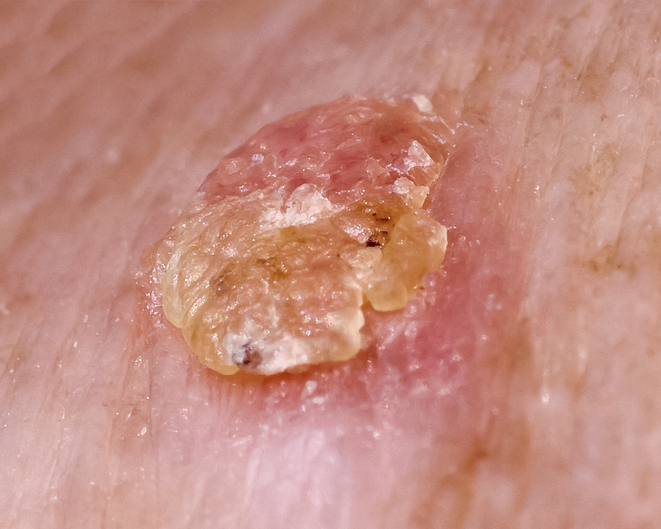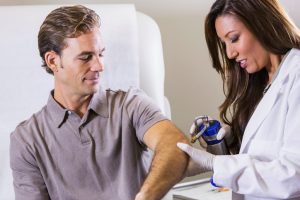Actinic Keratosis Treatments from U.S. Dermatology Partners
What Is Actinic Keratosis?
Actinic Keratosis, also known as solar keratosis, is a scaly or crusty lesion on the skin that develops slowly and indicates the presence of sun damage. It is most commonly found on parts of the body frequently exposed to the sun including the bald scalp, face, ears, lips, backs of the hands or forearms, neck, and shoulders.

Actinic keratosis improves just two days after a freezing removal treatment.
Actinic keratoses are considered precancerous and can develop into a type of skin cancer called squamous cell carcinoma. In fact, some 40 to 60 percent of squamous cell skin cancers begin as untreated actinic keratoses.
Because of this, your doctor should be diligent in diagnosing, treating and monitoring actinic keratosis.
Find This Service Near You
Who Is at Risk for Actinic Keratosis?
Although anyone can develop actinic keratosis lesions, some people are more susceptible to them than others.
Actinic keratoses occur most commonly in men and women older than 40 who live in a sunny climate, have a history of sun exposure or sunburn, and have pale skin, red or blond hair and light-colored eyes. People with a tendency to freckle or burn in the sunlight, or those who have a history of skin cancer, are also at risk. However, younger people, even those with dark skin, can also develop actinic keratoses if they live in very sunny climates.
Those with weakened immune systems due to an underlying illness, or the use of immunosuppressive medications such as chemotherapy, are also much more likely to develop actinic keratoses.
Try our Skin Cancer Risk Assessment for a simple way to gauge your risk of sun damage and skin cancer.
Actinic Keratosis Symptoms

A pre-cancerous actinic keratosis. The surrounding brown spots on the skin are other points of damage that could develop into cancer.
Symptoms of actinic keratosis will change with time, but the condition usually starts out as a thick, crusty skin patch that’s about the size of a small pencil eraser. In some cases, you may have itching or burning. Over time, if left untreated, these lesions may develop into squamous cell carcinomas.
It’s important to contact your doctor if you see changes in any marks on your skin, such as inflammation, rapid growth of the lesion, bleeding, redness or ulceration.
Actinic Keratosis Treatments

Cryotherapy can be used to remove skin lesions from patients.
There are several ways to treat actinic keratosis, many of which can be done simply and quickly in your doctor’s office. These include:
- Excising (cutting) the lesion from the skin.
- Cauterizing the lesion with an electric current.
- Cryotherapy, a treatment that uses liquid nitrogen to freeze the lesion.
- Chemical peels, which will kill the affected skin cells.
- Photodynamic Therapy (PDT), which uses laser lights to kill the affected skin cells.
- Immunotherapy, which uses a prescription-only topical cream to remove the lesion.
After diagnosing an actinic keratosis, your dermatologist will help you find the treatment that is best for you.
Actinic Keratosis Prevention
Since actinic keratosis is caused by sun exposure, reducing your exposure to sunlight is the most effective way to prevent it. Be mindful that sun damage is cumulative over a person’s lifetime, so as our life expectancy increases, so does our risk of actinic keratoses and skin cancer.
Follow the same methods used for other forms of skin cancer prevention:
- Avoid prolonged sun exposure and wear sunscreen with a SPF of 30+ that blocks UVA and UVB rays.
- Avoid indoor tanning.
- Perform regular skin self-exams.
- Notify your doctor of any actinic keratoses that do not respond to treatment.
Regular examination of your skin can help you detect any changes or potential issues early, which is key to successful treatment. If you find any new or suspicious spots or lesions on your skin, make an appointment with a dermatologist as soon as possible, so they can determine if the spot needs medical attention.
*Results may vary by individual
